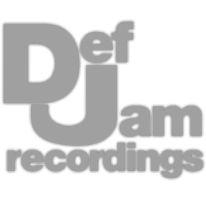Professional Analog Mastering.
Professional Analog Mastering.










When making space in a mix, a big point of interest is frequency overlap between instruments and removing that overlap. Attenuating 200 - 300Hz with a bell filter on various instruments is a good start, but saturation types, compression and how it’s introduced, and stereo imaging all play an important role.
If your mix is lacking space, you might have an issue with frequency masking - the most common cause of this is excessive 200 - 300Hz. That said, if you reduce this frequency throughout your mix, maybe with low-pass filters where appropriate or bell filters on other instruments, it’ll definitely help.
I put this one first because it is a really common cause of a clustered mix, and fortunately, really easy to fix.
Let’s take a listen to before and after these filters are applied.
Saturators create both even and odd harmonics, or a mixture of the 2 - but if you add too many similar saturators, you’ll end up with excessive frequency overlap. For example, if I use tube saturation on every instrument, odds are the 2nd ordered harmonic is going to reduce space.
I can’t tell you what each saturator adds since they come from different developers, but it’s a great idea to run a low-frequency sine wave through your saturator, and then observe the harmonics with a frequency analyzer on the other side. This will give you a good idea of which saturators can be used without too much overlap.
Let’s listen to a mix with overlapping harmonics, and one with alternated harmonic formations.
Dynamics are incredibly important when trying to give your mix space - use too much compression and it becomes increasingly difficult to differentiate between various instruments. To help with this, try more intentional compression - for example, emphasize transients with short attack and release times combined with a hard knee.
Or maybe smooth out a vocal with optical compression, while increasing the smack of a kick with a high ratio, DBX-style compressor. The point is, that if your compressors are creating unique sounds, you can utilize needed compression while retaining the identity of your instruments.
Let’s listen and notice how we decrease the dynamic range, but retain the space between signals.
The Kirchhoff EQ has a useful function with which you can attenuate a frequency range of the signal using another range as its trigger. A great way to increase space and clarity in your mix is by attenuating 200 - 300Hz, using roughly 3-5kHz as the trigger.
This will reduce masking, increase the perceived dynamic range, and carve out space amongst more complex instruments. Let’s take a listen to it.
Although other EQs do this as well, the Pro-Q3 offers an analysis tool with which you can observe overlap between the signal on which the EQ is inserted, and other signals in the mix. For example, I could observe the overlap between my kick and bass, indicated in red.
From there I can choose which instrument or instruments to attenuate these overlapping frequencies on - in turn giving each instrument some space. Let’s listen to overlap being reduced.
Although a little complex, we can use the match function of the Pro-Q3 to separate competing signals and carve out more room. First I’ll side-chain the competing signal, match the 2, and then delete extreme bands - then I’ll highlight them all and invert their gain.
Now what would’ve made them more similar is being used to make them more distinct. Let’s listen and notice how the signals each get some additional space from this process.
If you’re trying to create a louder mix or maybe a master, use a linear phase EQ and high-pass filter to attenuate up to 30Hz. Since the lowest frequencies are so powerful, they take up a significant amount of headroom, so it’s best to reduce their amplitude.
Since we can barely perceive them, we don’t have to sacrifice too much to get more space to work with. Let’s listen, but keep in mind the effect will be subtle.
Similar to how we need to be selective with downward compression like in chapter 3, we should be mindful of how much upward compression we use. Although upward compression brings out details, it’ll reduce the dynamic range and might affect the separation and space between instruments.
Let’s listen to a mix in which all instruments have upward compression, compare it to one in which only a few have it, and notice how the effect reduces space when used excessively.
Binaural panning utilizes psychoacoustic effects to place a signal within a 360-degree field, as opposed to the 90-degree field we have access to with traditional panning. If the instrument you’re working on isn’t absolutely essential to the mix and seems out of place, try binaural panning.
I wouldn’t recommend this on vocals, kick, bass, or anything you can’t afford to lose if your listener is playing your track on a mono system.
Let’s take a listen and notice how we achieve more space.
Like in our last chapter, we know that moving instruments to a wider stereo field helps create space - that’s why I enjoy this really simple effect. A sample delay that delays one channel of a stereo signal can place it anywhere within a 360-degree stereo field.
That said, you don’t need complex stereo placement plugins, but only your ear and a sample delay plugin to create more space.
Let’s listen to this effect used on instruments that don’t need to be mono, and notice how we achieve more space and a more interesting mix.
The Gullfoss dynamically amplifies and attenuates frequencies to reduce masking and create a balanced sounding instrument, instrument group, or full mix. I like to use this plugin on my buses to make them more balanced, in turn creating more space in my mix and an overall more balanced sound.
Let’s listen to this plugin being used on various buses and notice how we can perceive more space.